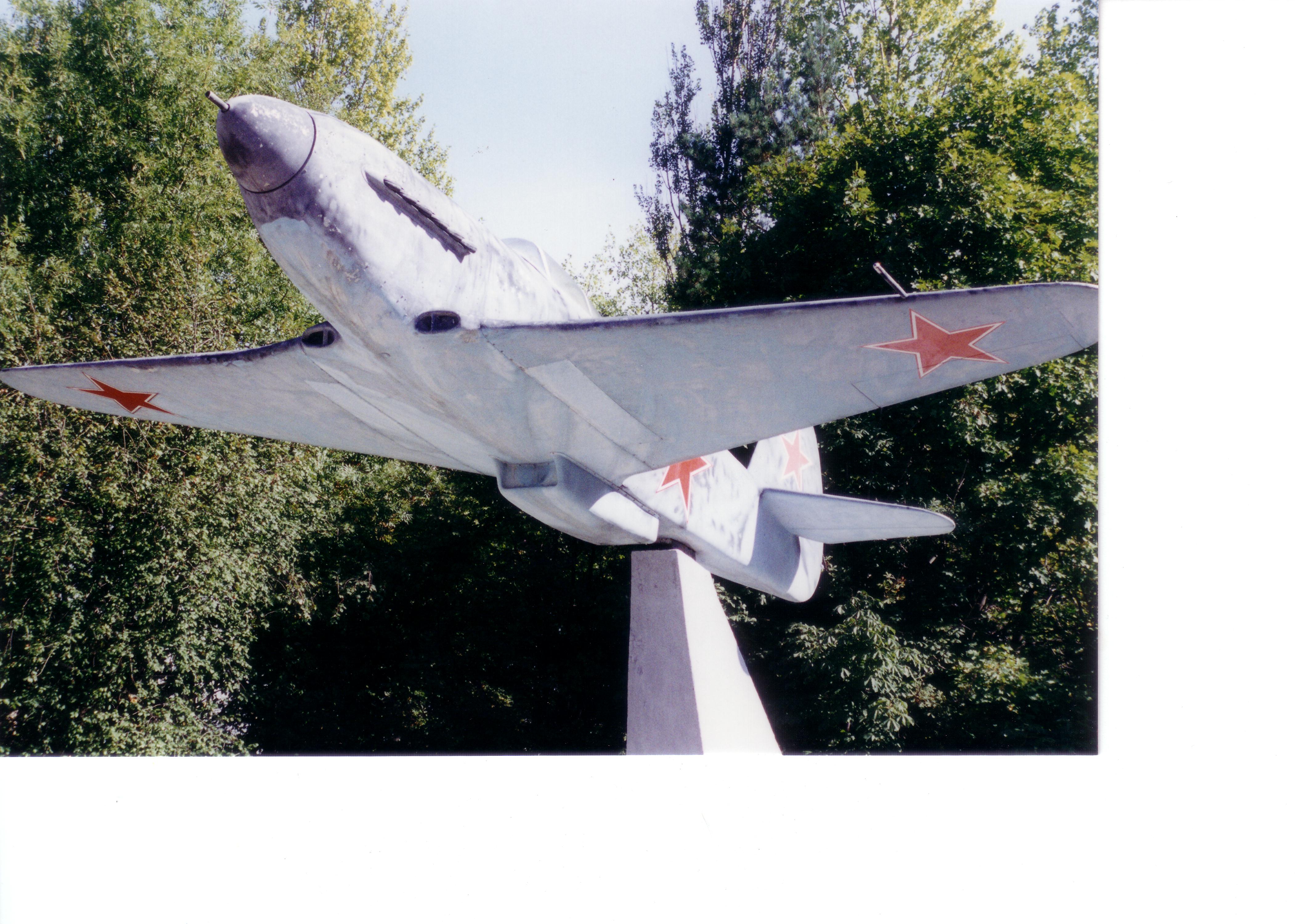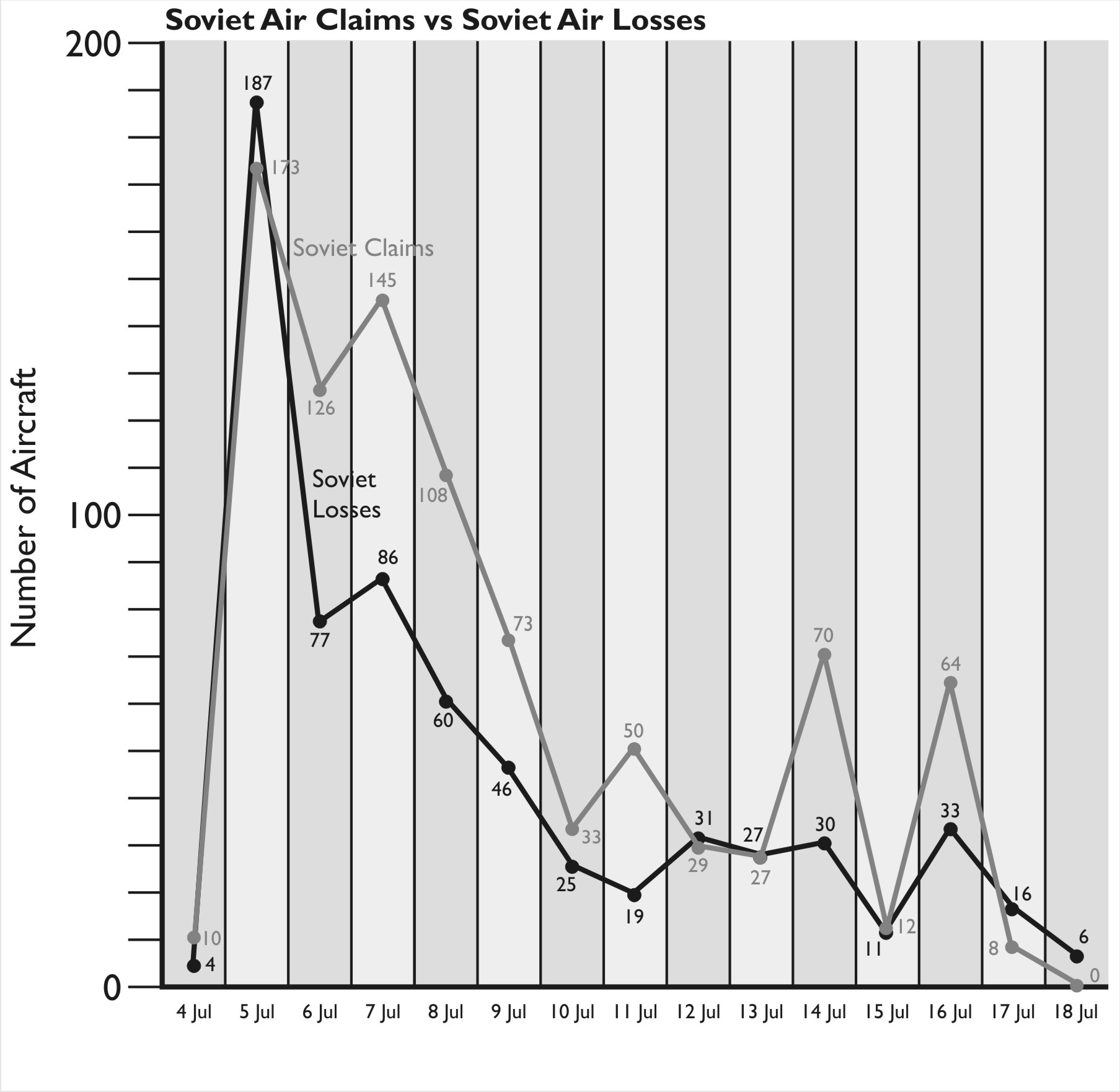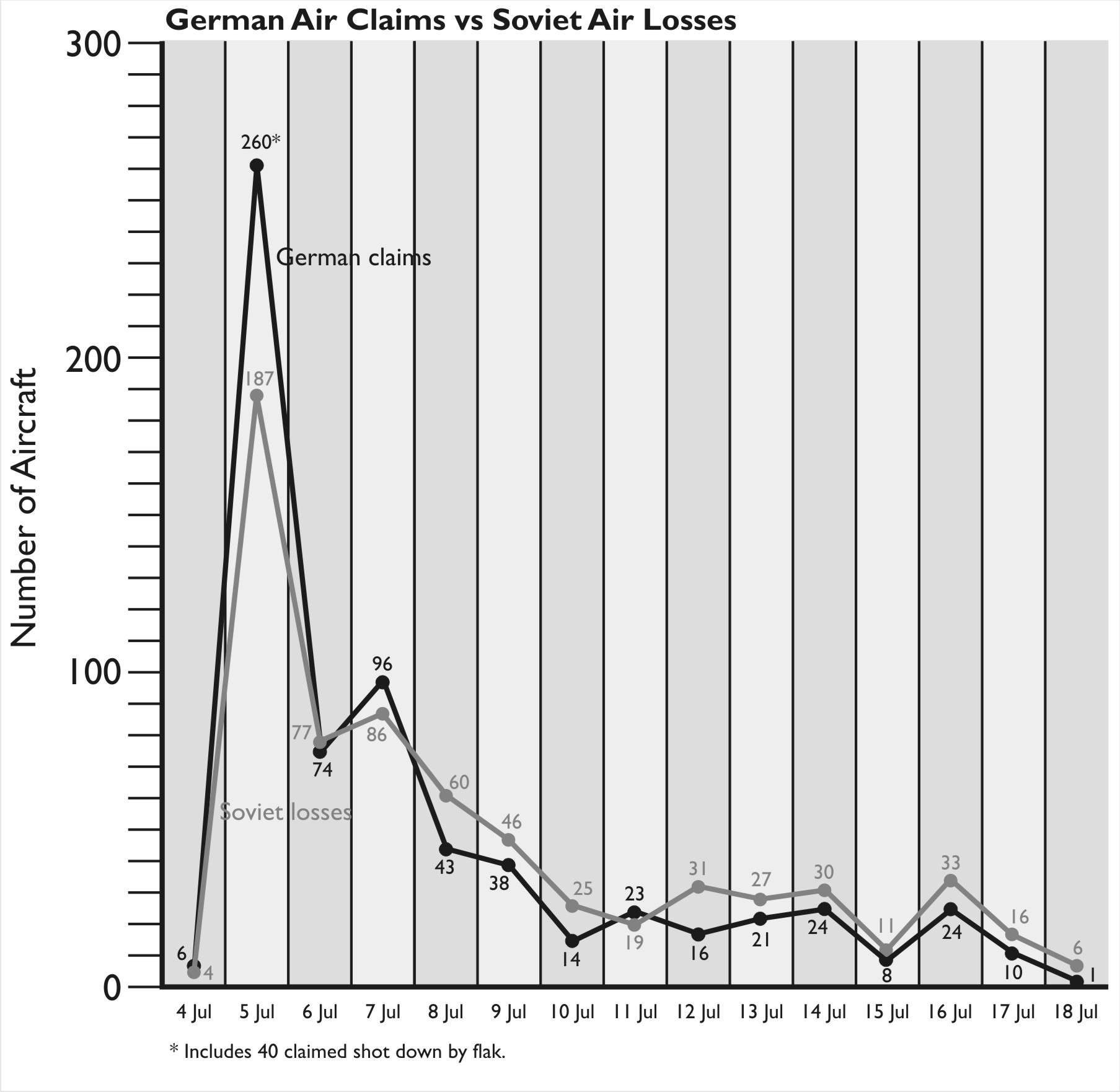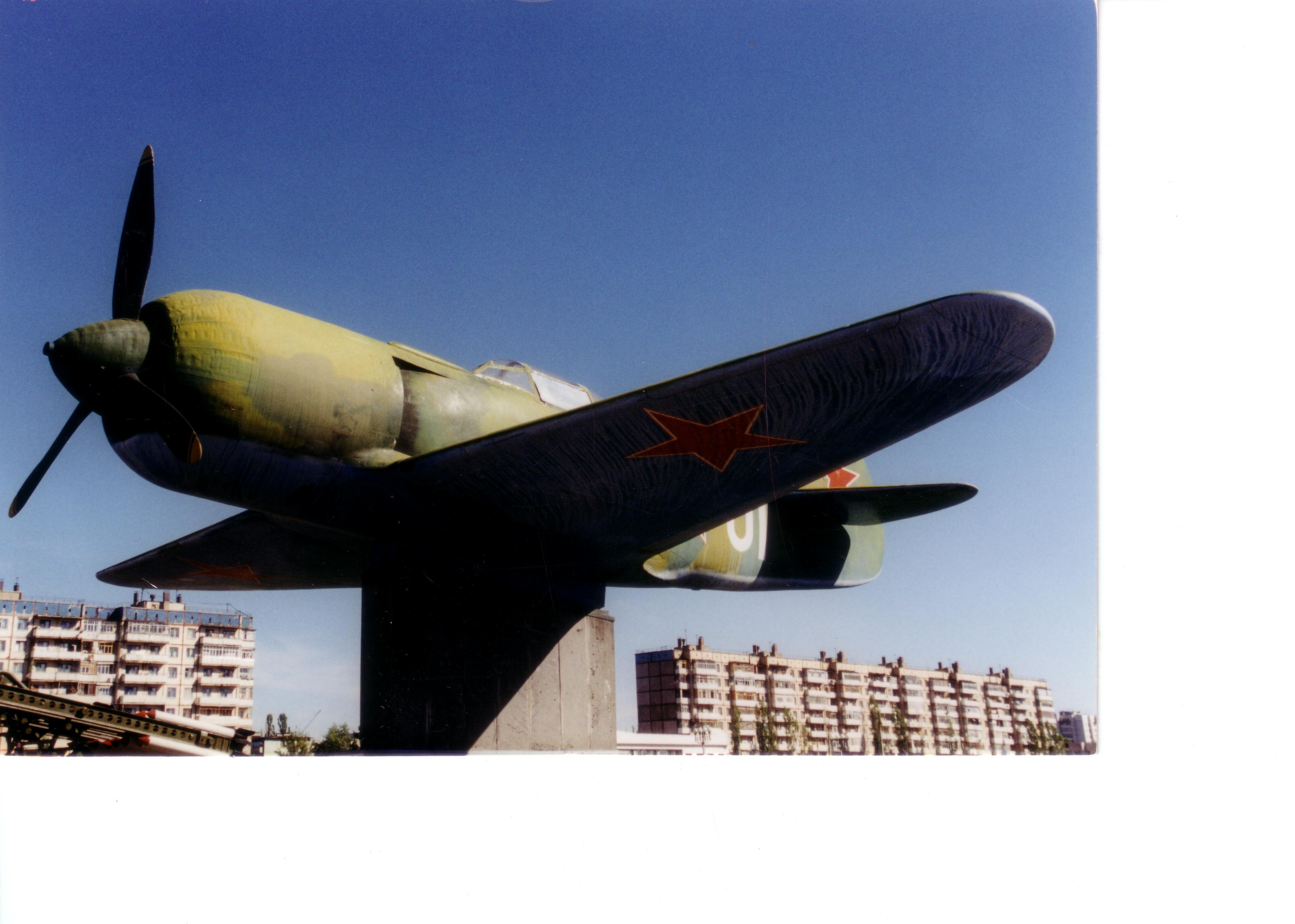
I do have a completed manuscript that I am marketing. I have done a number of posts recently related to my work on this. Let me list them below:

Excellence in Historical Research and Analysis

Excellence in Historical Research and Analysis

I do have a completed manuscript that I am marketing. I have done a number of posts recently related to my work on this. Let me list them below:

The following is the list of chapters and estimated page count for the book I am finishing: Aces at Kursk: The Belgorod Offensive Air War

As pointed out in my last two posts, it appears that the Soviet air force at Kursk (in the south) from 4 to 18 July 1943 claimed more eight times as many planes shot down as the Germans actually lost. This was in an air battle that was larger than the Battle of Britain. The graph above is from page 839 of my original Kursk book and is repeated on page 285 of my new Prokhorovka book. To quote (from page 840/286):
…the Soviet claims do not appear to have been related to the German casualties. Instead, if one compares Soviet losses to Soviet claims of German losses one does find a fit. The pattern is fairly clear, the Soviets always claimed more casualties than they lost. With the Soviets losing 658 planes, and claiming 928 German kills, we are looking at the Soviets claiming about 40 percent more kills than they lost. This over-claiming is fairly consistent from day to day, and as shown elsewhere [in the book], is not a problem unique to the Soviet air force [it was also the case for the Soviet Army].

A briefing based upon this data was presented to Col. Fyodor Sverdlov in October 1994, who was a staff officer for the Eleventh Guards Army at Kursk and later a professor at the Frunze Military Academy. After presenting the chart showing Soviet claims to German losses, Sverdlov stated that “the enemy always suffers 30% more losses than you.”
Colonel Sverdlov knew from his experiences in the war (and he was there from the Battle of Moscow to the end), that they regularly reported more German losses than they suffered. This was just standard procedure. I also did the same comparison in my books for Soviet claims of tanks killed compared to German losses, and found the same pattern (I may post about that at some point). Yet I regularly encounter passages in various books on the Eastern Front that quote Soviet claims of German losses without cross-checking these claims to the German records.

As discussed on my post on the Soviet 728th Fighter Regiment, the Soviet air force at Kursk (in the south) appears to claim more than eight times as many planes shot down as the Germans actually lost. The graph above is from page 839 of my original books and is repeated on page 285 of my new Prokhorovka book.
So how did the Germans do?
To quote from my books (pages 839, 840 and 844 in my Kursk book or pages 285, 286 and 290 in my Prokhorovka book):
The reverse tendency is not displayed by the Germans….This comes out to a total of 658 claimed kills by the VIII Air Corps compared to 658 actual losses by the Second and Seventeenth Air Armies. It would appear that at least for this two-week period, German reporting of air claims was reasonably accurate while the Soviet claims were outrageously high….This does bring into question the validity of all Soviet ace totals. On the other hand, the fact that German claims for 4 to 18 July were almost equal to Soviet losses during that time does provide some level of confidence in the accuracy of German claims. Still, one notes that the Luftwaffe claimed 220 planes shot down by air and 40 by antiaircraft on the 5th of July, when the Soviets reported losing 187, so one should not place too much reliance on the accuracy of these claims. Yet, based upon this limited sample, it does appear that the German ace claims are usually valid while the Soviet claims are clearly inflated, and possibly inflated by several times.


Well after the original Kursk Data Base project was done, I contracted a researcher to pull up some Soviet air regiment records from the battle. We had originally built our database on the Second, Fifth and Seventeenth Air Army records, but always wondered what the individual air records held. So as an experiment, I pulled up the records for the 5th Guards, 27th, 240th, 270th and 728th Fighter Regiments for 4-18 July 1943. They were a sampling from all three air armies and all rather famous air regiments. At the time, I was busy with other projects (our urban warfare studies) so set them aside. I finally got around to going through them and translating them over a decade later.
The regiment records mostly just record how many sorties they flew that day and too where, what their strength was, how many planes they claimed to have shot down and how many planes they lost. It is their claims of planes shot down that got my attention.
As I pointed out in page 839 of my original Kursk book (and page 285 of my Prokhorovka book), the Soviet air force at Kursk (in the south) appeared to claim more than eight times as many planes shot down as the Germans actually lost. The graph above is from those pages. Was not sure whether this was optimism or deliberate overstatement at the highest levels of command or something that trickled up from the lower levels. It appears to be something that trickled up from the lower levels. An air regiment reports to an air division which often reports to an air corps which then reports to the air army. So, looking through the regiment air records, what stood out was that some of these regiments had wildly optimistic kill claims.
Let me just give you one example, this is from the 728th Fighter Regiment on 16 July 1943. They claimed on that day to have shot down 13 planes, 7 Me-109s, 5 Ju-87s (Stukas) and one He-123. Their listing by name of who killed what and where is provided below. The actual reported German losses for their VIII Air Corps this day by the Luftwaffe air liaison officer was three planes: 1 Fw-189 and 2 Me-109s. The quartermaster reports for 16 July indicate only one plane lost, an Hs-129. So, it appears that not only is the Soviet regiment claims optimistic, but in fact, they may not have made a single kill that day!
This is just one of around 26 fighter regiments in the Second Air Army in July 1943. Also other air units and anti-aircraft artillery were involved in the fighting. There were a total of 64 Soviet claimed air combat kills on 16 July (see chart). Now this is the worse case for the five fighter regiments I looked at, but there are many other similar cases. Quite simply, the habit of over-claiming was common among Soviet air units at all levels.
The actual claims by the 728th Fighter Regiment for 16 July 1943:
Captain Vorozheikin is Arsenii Vasilyevich Vorozheikin, the sixth highest scoring allied ace of the war with 52 claimed kills and 13 shared kills.

The Fifth Guards Fighter Regiment was the highest scoring Soviet air regiment of the war with 739 victories claimed. It was lead by twice Hero of the Soviet Union, Major Vasilii Zaitsev (1911-1961) who was credited with 34 kills during the war (and 15 or 19 shared kills). The unit’s deputy command was ace Lt. Vatalii Popkov (1922-2010), also twice Hero of the Soviet Union who was credited with 41 kills during the war.
On 7 July the regiment’s records report the following kills:
It also reports the following losses:
* Lt. Shumilin after an air battle made a forced landing on wheels in the area of Mikhailovka. The pilot was seriously wounded.
** Hit by fire from antiaircraft artillery and an Fw-190, pilot cross the front line and made a landing. Pilot was wounded in the legs. Plane was burned on the ground by German artillery and mortar fire.
*** but he himself was caught in fire by two Me-109s, as a result, the La-5 burned and the pilot died.
So for 7 July, they claimed 8 Me-109s and four other planes at a loss of four planes, two pilots lost and two pilots wounded. On 7 July, the German VIII Air Corps lost 4 or 5 Me-109s (see Tables IV.27 and IV.28 of my Kursk book, page 1416). This was but one fighter regiment of the 26 fighter regiments in the Second and Seventeenth Air Armies on 7 July 1943.

Ivan Kozhedub was the highest scoring allied ace of World War II, having been credited with 62 or 64 victories. Hard to nail down the exact number. Most sources say 62, including Wikipedia. Many sources also credit him with also shooting down two U.S. P-51s. The Wikipedia article then lists his victories based upon the book Stalin’s Falcons by Mikhail Bykov. That listing records 64 planes, but no P-52s. The Wikipedia article also has a section of the “Alleged shooting down of two USAAF P-51 fighters.” That write up does not appear to accept the story.
A number of other sources also credit him with 64 claimed kills, or 64 claimed kills and two P-51s. Sort of mystified why this is an issue. I assume there are records of his claims somewhere.
So….what do we have out there:
Seidl is Stalin’s Eagles by Hans D. Seidl’s, Polak is Stalin’s Falcons by Tomas Polak with Christopher Shores, Bykov is Soviet Aces 1941-1945: The Victories of Stalin’s Falcons by Mikhail Bykov, Hardesty is Red Phoenix Rising by Von Hardesty and Ilya Grinberg, and Red Falcons is the Red Falcons website here: http://airaces.narod.ru/all1/kojedub.htm. Maybe the title of this post should have been “bird droppings.”
It is, of course, a different issue than the validity of those 62+ claims, which can be justifiably challenged. I will post about that later.

Even though The Battle of Prokhorovka book has been released, it is still available through Amazon.com for $28.43: Buy from Amazon. The list price on the hardcover is $44.95. I have no idea for how long Amazon.com will continue to sell it at this price.
The chapters for the book are listed in this post:
What else is in the book (besides words) is listed in this post:
The reason why I wrote this book is discussed in this post:
The book can obtained from Stackpole at: Stackpole Books
Or from Amazon.com at: Buy from Amazon

One last reminder, if you pre-order The Battle of Prokhorovka through Amazon.com it is selling for $28.43: Buy from Amazon. The list price on the hardcover is $44.95. I do not know what price it will be listed at on Saturday, 1 June 2019 (nor do I have any involvement or say in these matters).
The chapters for the book are listed in this post:
What else is in the book (besides words) is listed in this post:
The reason why I wrote this book is discussed in this post:
The book can obtained from Stackpole at: Stackpole Books
Or from Amazon.com at: Buy from Amazon

One more reminder, if you pre-order The Battle of Prokhorovka through Amazon.com it is selling for $28.43: Buy from Amazon. The list price on the hardcover is $44.95. I do not know what price it will be listed at on 1 June 2019 (nor do I have any involvement or say in these matters).
The chapters for the book are listed in this post:
What else is in the book (besides words) is listed in this post:
The reason why I wrote this book is discussed in this post:
The book can obtained from Stackpole at: Stackpole Books
Or from Amazon.com at: Buy from Amazon